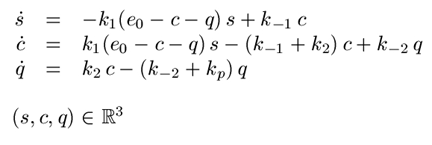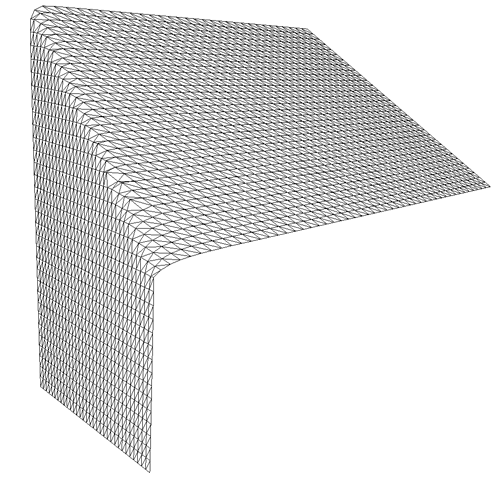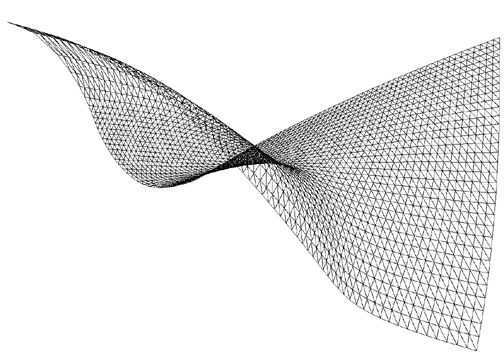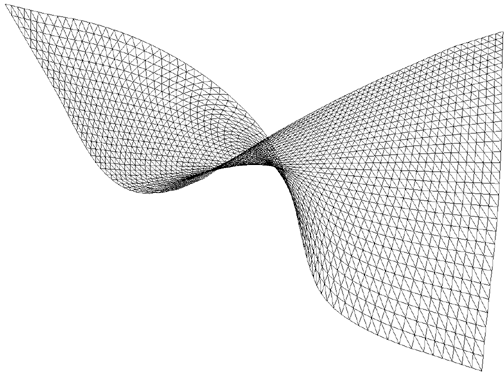
Enzyme Reaction Model*

In this enzyme reaction model, the variables s, c and q are the concentrations of different chemical species undergoing chemical reaction. Here, k1, k-1, k2, k-2, kp > 0 are the rate constants and e0 > 0 is the concentration of the enzyme, taken to be constant.
The dynamics here are described by a nested hierarchy of attracting invariant manifolds: an equilibrium point contained in a curve contained in a surface S which separates the physical region of phase space. The rate of attraction toward the surface is faster than toward the curve in the surface. The rate of attraction toward the curve in the surface is faster than toward the point in the curve. Here, S is called the slow-transient surface. A technical obstacle here is that S is a manifold with boundary and is not overflowing.
Below, the part of S in the region { 0 < s < 2 } is computed for three parameter choices. In every case, k-1 = 1.0, k2 = 1.0, k-2 = 1.0 and e0 = 1.0.

kp = 0.1, k1 = 103

kp = 0.1, k1 = 1.0

kp = 1.0, k1 = 1.0
*M. R. Roussel and S. J. Fraser, On the geometry of transient relaxation, J. Chem. Phys. 94 (1991), 7106--7113.